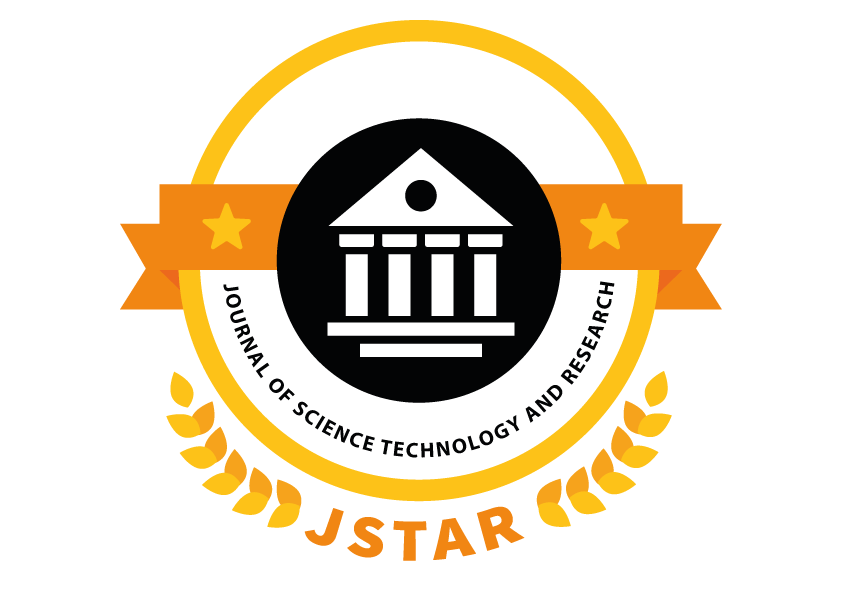1. E. Chong and A. A. R. Alsaeedy (2020). 1–1 in IEEE Open Journal of Engineering in Medicine and Biology.
2. R. F. Sear, N. Velasquez, R. Leahy, R. Restrepo, N. J. Restrepo, S. El Oud, N. Gabriel,… Johnson, N. F. (2020). Using artificial intelligence to evaluate COVID-19 content in the online health assessment war. 1–1 in IEEE Access.
3. S. Hu, Y. Gao, Z. Niu, Y. Jiang, L. Li, X. Xiao, G. Yang (2020). COVID-19 Infection Detection and Classification from CT Images with Poorly Supervised Deep Learning .
4. Zhang, Y., Li, Y., Yang, B., Zheng, X., and Chen, M., IEEE Access, 1–1. (2020). COVID-19 Hazard Assessment Using Multisource Data from a Geographical Perspective IEEE Access.
5. M. Abdel-Basset, R. Mohamed, M. Elhoseny, R. K. Chakrabortty, and M. Ryan (2020). A COVID-19 finding model that combines a more advanced marine hunter’s calculation with a positioning-based variety reduction process. 1–1.
6. Petropoulos, F., and Makridakis, S., “Guaging the Novel Covid Coronavirus,” PLOS ONE, vol. 15, no. 3, e0231236, 2020.
7. G. Grasselli, A. Pesenti, and M. Cecconi, Jama, 2020, “Basic consideration use for the Coronavirus flare-up in lombardy, Italy: early experience and forecast during a crisis reaction.”
8. C. P. E. R. E. Novel et al., “The epidemiological features of a 2019 novel Covid infection (Coronavirus) incident in China,” Zhonghualiuxingbingxuezazhi= Zhonghualiuxingbingxuezazhi, vol. 41, no. 2, p. 145, 2020.
9. International Journal of Forecasting, vol. 36, no. 1, pp. 178–185, 2020.
10. N. C. Mediaite. Harvard educator sounds caution on ‘probable’ Covid pandemic: 40% to 70% of world could be tainted for the current year. Gotten to on 2020.02.18. [Online]. Accessible: https://www.mediaite.com/news/harvardprofessor-sounds-alert on-possible Covid pandemic-40-to-70-ofworld-could-be-contaminated for this present year/.
11. Punarselvam, E., Suresh, P., & Parthasarathy, R. (2013). Segmentation of CT scan lumbar spine image using median filter and canny edge detection algorithm. Int J Comput Sci Eng, 5, 806-814.
12.Punarselvam, E., et al. “Segmentation of Lumbar spine image using Watershed Algorithm.” International Journal of Engineering Research and Applications, ISSN (2013): 2248-9622
13. Punarselvam, E., et al. “Segmentation Analysis Techniques and Identifying Stress Ratio of Human Lumbar Spine Using ANSYS.” Journal of Medical Imaging and Health Informatics 10.10 (2020): 2308-2315.
14. Karthick, R., et al. “Overcome the challenges in bio-medical instruments using IOT–A review.”; Materials Today: Proceedings 45 (2021): 1614-1619.
15. Suresh, Helina Rajini, et al. “Suppression of four wave mixing effect in DWDM system.” Materials Today: Proceedings 45 (2021): 2707-2712.
16. Soundari, D. V., et al.”Enhancing network-on-chip performance by 32-bit RISC processor based on power and area efficiency.” Materials Today: Proceedings 45 (2021): 2713-2720.
17. Sabarish, P., et al., Investigation on performance of solar photovoltaic fed hybrid semi impedance source converters.” Materials Today: Proceedings 45 (2021): 1597-1602.
18. Karthick, R., and M. Sundararajan. “SPIDER-based out-of-order execution scheme for HtMPSOC “; International Journal of Advanced Intelligence paradigms 19.1 (2021): 28-41.
19. Karthick, R., and P. Meenalochini. “Implementation of data cache block (DCB) in shared processor using field-programmable gate array (FPGA).” Journal of the National Science Foundation of Sri Lanka 48.4 (2020).
20. Sabarish, P., et al., “An Energy Efficient Microwave Based Wireless Solar Power Transmission System” IOP Conference Series: Materials Science and Engineering. Vol. 937.No. 1. IOP Publishing, 2020.
21. Vijayalakshmi, S., et al. ”Implementation of a new Bi-Directional Switch multilevel Inverter for the reduction of harmonics” IOP Conference Series: Materials Science and Engineering. Vol.937. No. 1. IOP Publishing, 2020.
22. Karthick, R., and M. Sundararajan. “Design and implementation of low power testing using advanced razor based processor” International Journal of Applied Engineering Research 12.17 (2017): 6384-6390. 23. Punarselvam, E., and P. Suresh. “Non-Linear Filtering Technique Used for Testing the Human Lumbar Spine FEA Model.” Journal of medical systems 43, no. 2 (2019): 1-13.
24. Punarselvam, E., Hemalatha, E., Dhivahar, J., Gowtham, V., Hari, V., & Thamaraikannan, R. PREDICTING WIRELESS CHANNELS FOR ULTRA-RELIABLE LOW-LATENCY COMMUNICATIONS.
25. Punarselvam, E., et al. “Segmentation of Lumbar spine image using Watershed Algorithm.” International Journal of Engineering Research and Applications, ISSN (2013): 2248-9622.
26. Punarselvam, E., and P. Suresh. “Edge detection of CT scan spine disc image using canny edge detection algorithm based on magnitude and edge length.” 3rd International Conference on Trendz in Information Sciences & Computing (TISC2011). IEEE, 2011. (2021): 4991-5004.
27. Punarselvam, Dr E., and S. Gopi. “Effective and Efficient Traffic Scrutiny in Sweet Server with Data Privacy.” International Journal on Applications in Information and Communication Engineering 5.2 (2019): 1-5
28. Punarselvam, E., and P. Suresh. “Investigation on human lumbar spine MRI image using finite element method and soft computing techniques.” Cluster Computing 22, no. 6 (2019): 13591-13607.
29. Karthick, R., and M. Sundararajan. “A Reconfigurable Method for Time Correlated Mimo Channels with a Decision Feedback Receiver” International Journal of Applied Engineering Research 12.15 (2017): 5234-5241.
30. Karthick, R., and M. Sundararajan. “A novel 3-D-IC test architecture-a review” International Journal of Engineering and Technology (UAE) 7.1.1 (2018): 582-586.
31. Karthick, R., and M. Sundararajan.,”PSO based out-of-order (ooo) execution scheme for HTMPSOC” Journal of Advanced Research in Dynamical and Control Systems 9 (2017): 1969.
32. Punarselvam, Dr E., and S. Gopi. “Effective and Efficient Traffic Scrutiny in Sweet Server with Data Privacy.” International Journal on Applications in Information and Communication Engineering 5.2 (2019): 1-5.
33. Punarselvam, E., et al. “Different loading condition and angle measurement of human lumbar spine MRI image using ANSYS.” Journal of Ambient Intelligence and Humanized Computing 12.5
34. Punarselvam, E., and P. Suresh. “Non-Linear Filtering Technique Used for Testing the Human Lumbar Spine FEA Model.” Journal of medical systems 43, no. 2 (2019): 1-13.
35. Punarselvam, E., Hemalatha, E., Dhivahar, J., Gowtham, V., Hari, V., & Thamaraikannan, R. PREDICTING WIRELESS CHANNELS FOR ULTRA-RELIABLE LOW-LATENCY COMMUNICATIONS.
